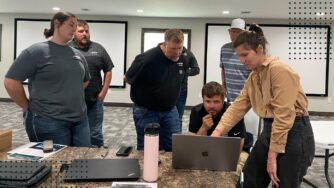In recent years, cover crops have generated excitement to improve soil health, reduce erosion, and help improve the sustainability of agriculture practices. An increasing amount of scientists, policymakers, and farmers, are utilizing regenerative agriculture to scale approaches that significantly help improve the environmental impact of farming.
Cover crops simply mean growing a plant to “cover” and protect the soil when it would otherwise be bare. Instead of planting cover crops, if the soil is left bare between two cash crops, water will not infiltrate into the soil. Often, the water run-off from bare soil leads to soil erosion or water pollution. The roots help break through compacted soil layers and allow water to flow through.
Once a cover crop is established, it is important to ensure they don’t interfere with the row crops in the spring. It is essential to note that cover crops are grown to keep the soil covered to improve soil health. Cover crops are terminated before the crop reaches maturity or produces seeds. The timing of termination and the type of termination are critical for cover crop control.
Cover crops are not “one-size fits all”. There are many cover crops to choose from, and farmers must carefully choose to get the best results for their land. Some of the broad categories of cover crops are grasses, legumes, and brassicas. A farmer may choose a single cover crop to solve a specific problem or choose a mix of different cover crops to maximize soil health benefits.
To solve the world’s regenerative agriculture transition, you have to start with science. That’s why CIBO has paired a scalable technology approach with a science-based understanding of cover crops.



